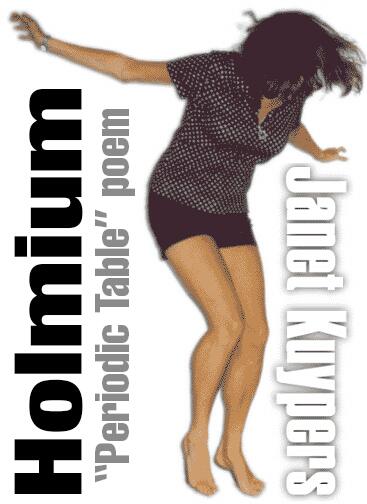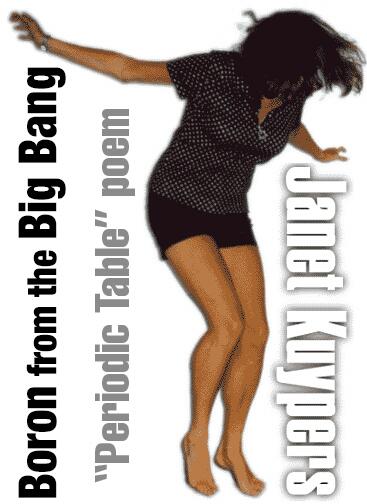Titanium
Janet Kuypers

from the “Periodic Table of Poetry” series (#22, Ti)
(based on the poem “The Way You Tease Me”)
10/1/13
What I think I like the most about you
is the way you always leave me wanting more.
The longer I’m out in the sun, the more red
my nose and cheeks get, and the more I want
to slather you all over me to protect me.
What I think I like the most about you is how
whenever I see you around me, you consume me
like a wave of heat on a summer afternoon.
Seeing your metal along my flesh teases me
until sweat dances down my hairline and tickles my neck.
What I think I like the most about you
is when you say that absence makes the heart grow fonder,
because you’re like the fireworks I only see
on special occasions, and with your absence
I want you more, so you couldn’t be more right.
What I think I like the most about you
are the things that make me think I have to fight for you,
are the things that make you cost just too much.
It’s true, the market determines your worth to the world,
even if you’re always priceless to me.
What I think I like the most about you
is the fact that you can lead the way to help me
fly high into the sky, so I could see any corner
of the Earth, or even see the Universe beyond
our narrow global vision. You do that for me.
What I think I like the most about you
is the fact that you seem so common in the world,
but you manage to hide yourself in just the right way.
But still, you’re everywhere from dental implants to cell phones,
to engagement rings to jet engines to space ships…
What I think I like the most about you
is the wondering about you, is the yearning for you.
That’s what I like. This high-charged guessing game.
You make me work so hard just to find you. You leave me
to think about the possibilities. And that’s what I like.




